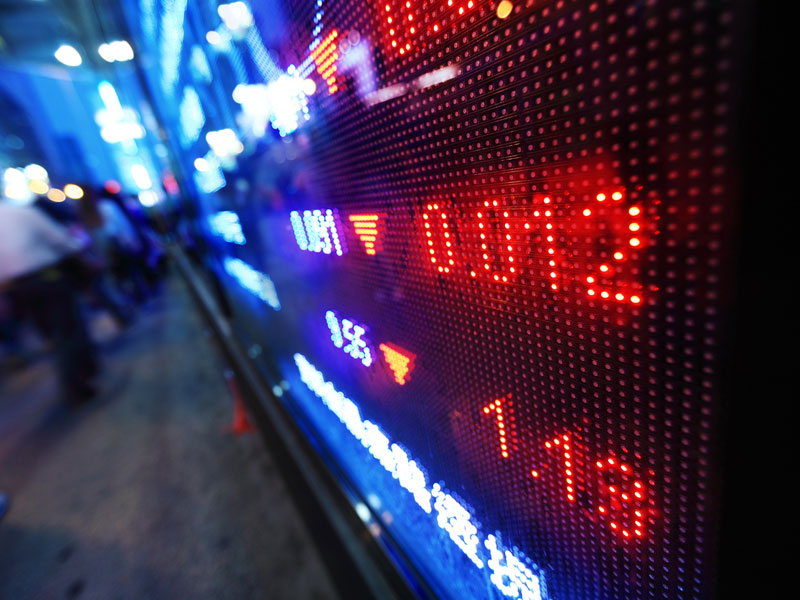
The Russian stock market opened Thursday for limited trading under heavy restrictions for the first time since Moscow invaded Ukraine, coming almost a month after prices plunged and the market was shut down as a way to insulate the economy.
Trading of a limited number of stocks, including energy giants Gazprom and Rosneft, took place under curbs meant to prevent a repeat of the massive selloff on Feb. 24 that came in anticipation of Western economic sanctions.
The significant restrictions on trading Thursday underlined Russia’s economic isolation and the pressure on the financial system despite central bank efforts to curb market plunges. Foreigners could not sell stocks, and traders were barred from short selling — or betting prices will fall — while the government has said it will spend $10 billion on shares in coming months, a move that should support prices.
The benchmark MOEX index gained 4.4% as some companies partially recovered losses from the plunge on the day of the invasion. Airline Aeroflot bucked the positive trend by losing 16.4% — not a surprise after the U.S., European Union and others banned Russian planes from their airspaces.
Russian stocks were only a small part of emerging market share indexes even before the war and only for those with a high risk tolerance, given extensive cronyism, nontransparent accounting and widespread state interference. They lost any attraction for most foreign investors when the Moscow Exchange was dubbed “uninvestable” about a week into the war.
“The stock market is really almost a sideshow at this point,” said Chris Weafer, CEO at Macro-Advisory Ltd., a consulting firm. “It’s more a sentiment indicator because obviously companies are not raising any money on the stock market, and they won’t be able to.”
He said, however, that state-owned banks or funds may have been buying to support prices: “It does look like state-supported buying rather than any genuine interest on the part of investors.”
Government efforts to stabilize stocks and the ruble that has plunged in value are a way to show that some confidence was returning and “to try to get that message across to people not to panic, that this is a temporary situation that will improve,” Weafer said. Nonetheless, he added, the Russian financial system remained in a “fragile” state.
Tim Ash, senior emerging markets sovereign strategist at BlueBay Asset Management, said reopened trading was “deeply managed” and suggested that “for those Russians with some spare cash, there is nothing much else to buy as hedge to inflation and currency collapse.”
Restrictions like shutting down and restricting the stock market are among those that Russia has taken to shore up the financial system against utter collapse, but they also close off the economy to trade and investment that could fuel growth.
Some foreign hedge funds have expressed interest in shopping for distressed assets _ viable companies trading at knocked-down prices — but they have no way to take part because of the trading restrictions, Weafer said.
A U.S. official called the severely restricted trading a “charade.”
“This is not a real market and not a sustainable model, which only underscores Russia’s isolation from the global financial system,” Daleep Singh, a deputy national security and economic adviser to President Joe Biden, said in a statement.
The economic turmoil in Russia from sanctions and the war has been severe. Hundreds of U.S., European and Japanese companies have pulled out of Russia. There have been bank runs and panic buying of sugar and other staples. The exchange rate of Russia’s ruble has tumbled.
Outside Russia, the reopening of stock trading on the Moscow Exchange has little impact, including on the vast majority of U.S. investors’ portfolios, said Leanna Devinney with Fidelity Investments.
The exchange’s market capitalization — about $773 billion at the end of last year, according to the World Federation of Exchanges — is a fraction of that of major Western or Asian markets. In comparison, the total of all equities on the New York Stock Exchange is roughly $28 trillion.
Russia’s central bank estimates that retail investors owned roughly 7.7 trillion rubles of stock, equal to $79 billion, as of late 2021.
Stocks last traded in Moscow on Feb. 25, a day after the MOEX sank 33% after Russian forces invaded Ukraine. Russia restarted trading in ruble-denominated government bonds earlier this week.
Roughly a week into the conflict, Russia was removed from emerging markets indexes compiled by MSCI after it determined the market to be “uninvestable.”
The London Stock Exchange suspended trading in shares of 27 companies with links to Russia on March 3, including some of the biggest in energy and finance. The shares lost most of their value before that: Rosneft dropped from $7.91 on Feb. 16 to 60 cents on March 2. Sberbank plunged from $14.90 to 5 cents.